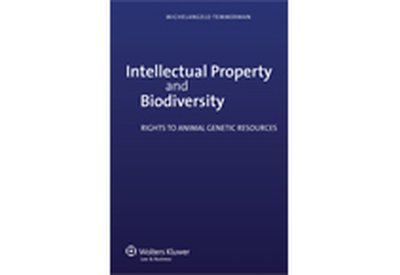10 Jan 2012
Additional rules of the game to ensure animal variety
Michelangelo Temmerman has become an expert in the legal studies of a relatively young field, the role of patent rights in biotechnology. Based on his PhD thesis, the book “Intellectual Property and Biodiversity” deals with the question of how patent rights can offer incentives for farmers to breed new and improved species. An interview.
Michelangelo Temmerman, your PhD thesis starts from the observation that there is a constant loss of livestock breeds. In other words the pool of animal genetic resources within agriculture is shrinking. To what extent is this so?
The Food and Agriculture Organization of the United Nations (FAO) classified twenty per cent of the 7616 breeds as being at risk in 2008 (Source: FAO’s State of the World’s Animal Genetic Resources for Food and Agriculture). In the six years preceding the publication of that study 62 breeds became extinct – a pace of one breed per month. Hence the term “erosion of animal genetic resources” was coined.
Why is there such a large decline in species?
There are many causes for the shrinking pool of animal genetic resources. My thesis, like the FAO’s study, focuses on animal genetic resources that are useful and used in agriculture and food production. The reasons for this phenomenon range from natural processes, epidemics, droughts and floods, to military conflicts. Added to this, is the general marginalisation of traditional production systems and (thus) of local breeds. This is the most important factor.
One point that you make is that this decline in the variety of animal genetic resources is market-driven.
Yes, that is true. Private standards set by large retailers require uniform products. Productivity and maximum attractiveness to the consumer is the target. This goes together with genetic uniformity, which is also required for the industrial cutting and packaging systems. Only certain species fit this description. For instance, no more then two chicken breeds account for over 90 per cent of European chicken meat. The rest is left to niche markets. Yet, these are often not sufficient to keep an agricultural breed ‘alive’.
What kind of incentives could or should be added to the market?
Initiatives like ‘pro specie rara’ are being taken in many countries including Switzerland; yet the demand for cheap products and thus for the most cost-effective production ‘naturally’ continues to prevail. It may require a long-term effort to fundamentally change this situation. Intellectual property rights (IPR) may have an underestimated role to play here.
Can you give examples where intellectual property rights (IPRs) could be beneficial?
One must differentiate between the types of IPRs at stake. On the one hand, patents can protect new genetic improvements, which were created with the means of biotechnology –this ‘rearranged biodiversity' is built upon what exists in nature, but is not as such existing biodiversity. On the other hand, existing ‘marketed’ biodiversity can be backed up with a creative use of trademarks and geographical indications, thereby strengthening the position of biodiverse products on niche markets.
Another idea is to take an approach analogous to the so-called plant variety rights. These rights reward creators of new and improved species with a short-term monopoly, and thus constitute a natural incentive for diversity. However, the particularities of animal genetic resources exclude a mere copy–paste approach here. A specific design is needed. Small improvements of breeds should especially be covered – the so called ‘low tech’ progress. This matter has in fact been the subject of a separate NCCR Trade Regulation project “Rights to animal genetic resources for food and agriculture”, which I conducted after completing my PhD.
Interview: Erich Schwarz
Publication:
Temmerman, Michelangelo (2011): Intellectual Property and Biodiversity. Rights to Animal Genetic Resources. Kluwer Law International. ISBN: 9789041138286
Further info
Book announcement



